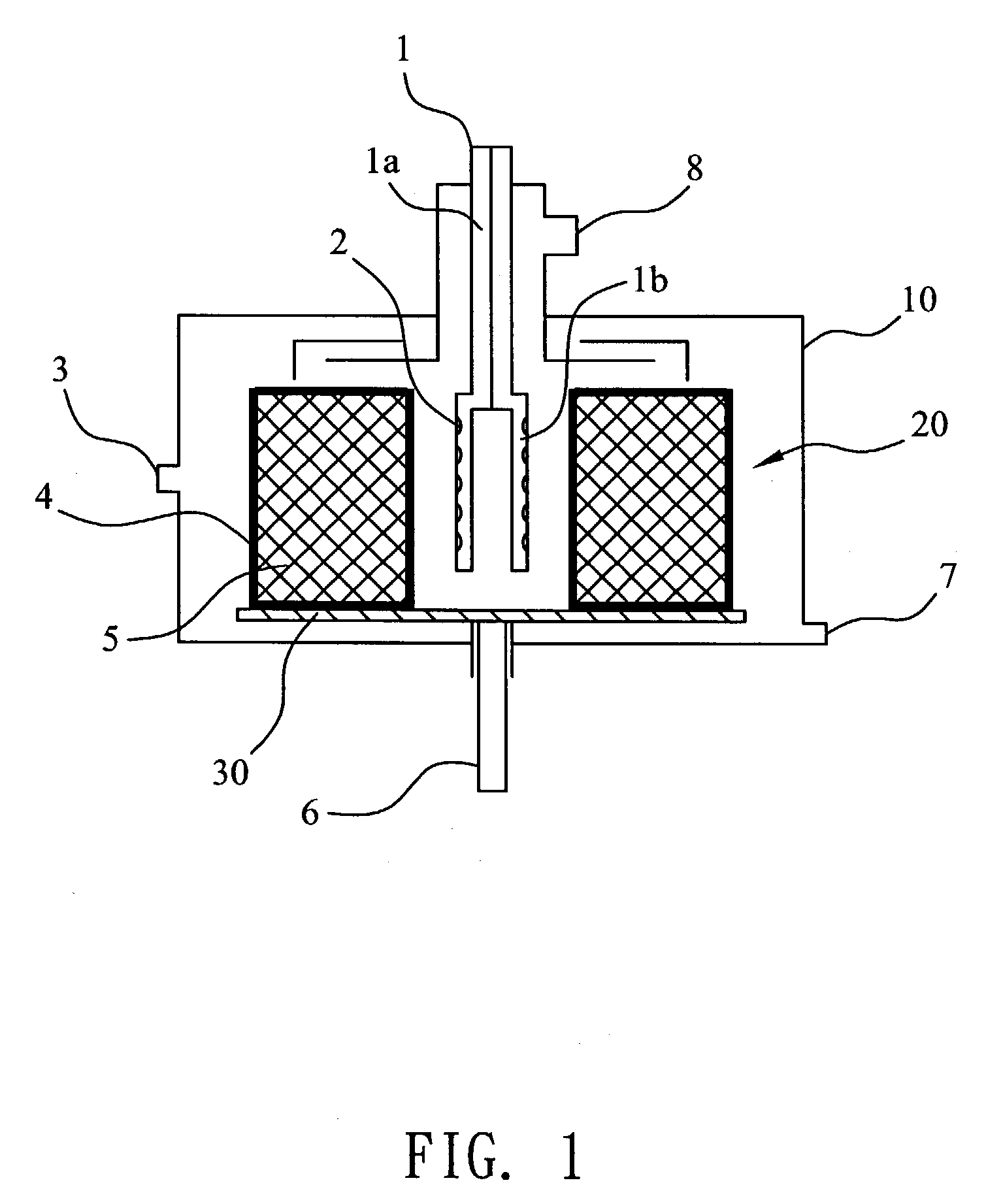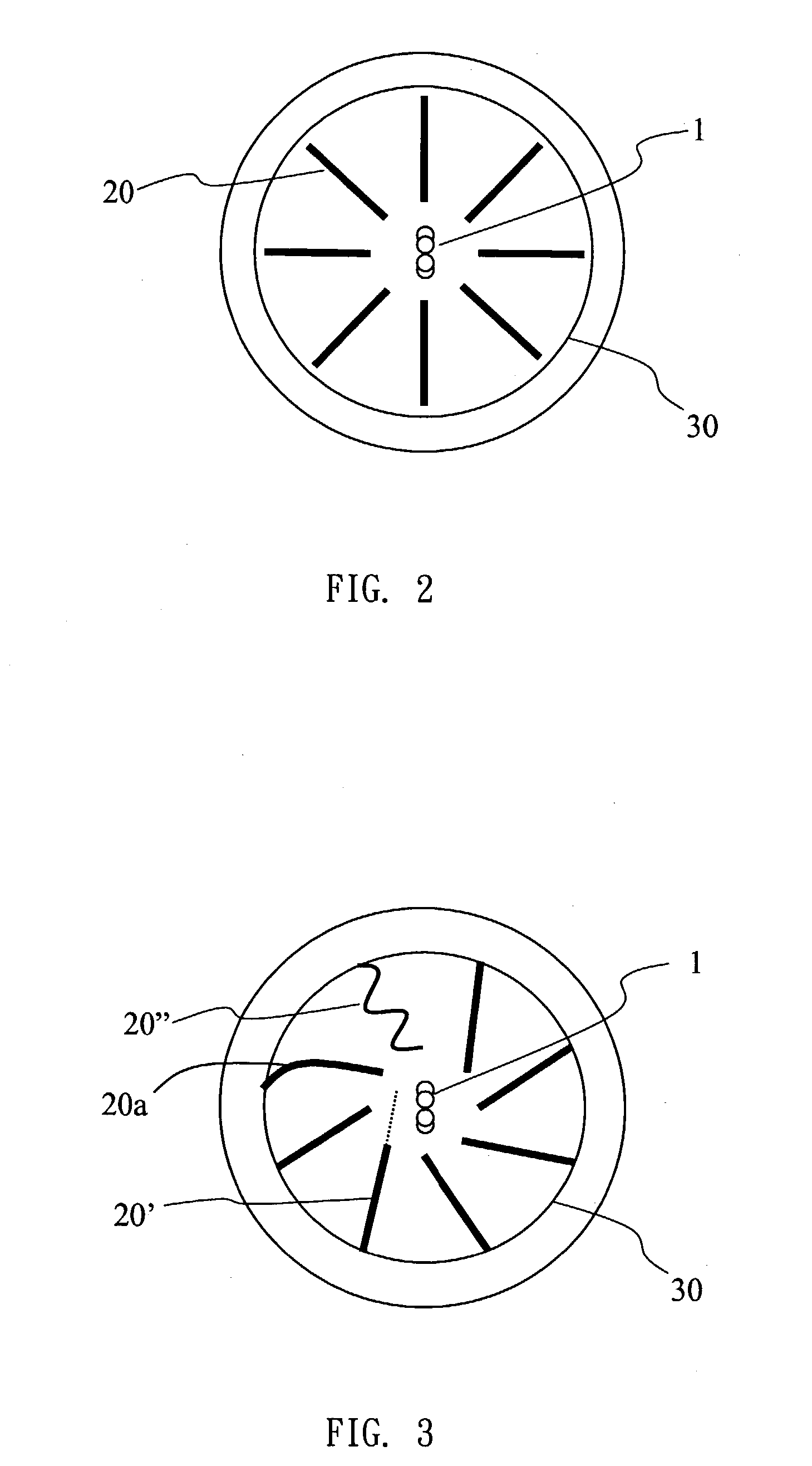Reactor for producing ultra fine particles
- Summary
- Abstract
- Description
- Claims
- Application Information
AI Technical Summary
Benefits of technology
Problems solved by technology
Method used
Image
Examples
example 1
Comparison of the Degrees of Micro-mixing
[0029]In order to compare the degrees of micro-mixing between a high-shear, high-vortex reaction device according to the present invention and the conventional ultra-gravity reaction device, the present invention adopted the parallel competitive reactions between H2BO3−, I− and IO3− proposed by Fournier et al. in 1996. The dynamic reaction mechanism thereof is shown in the following:
H2BO3−+H+→H3BO3 (1)
5I−+IO3−+6H+→3I2+3H2O (2)
I−+I2→I3− (3)
[0030]The reaction formula (1) is a neutralization reaction with an extremely fast reaction rate, and the reaction formula (2) is a redox reaction also with a rather fast reaction rate. When the micro-mixing is near perfect, almost all the hydrogen ions are reacted with H3BO3, because the neutralization is very fast. As a result, there is no formation of I2 and I3−. Therefore, a measurement on the variation of the concentration of I3− in the solution can indicate the micro-mixing efficiency.
[0031]When H...
example 2
Preparation of Ultra Fine Powder of Ferric Oxide
[0045]Aqueous solutions of same equivalents (0.1 N / mole) of FeSO4 and NH4OH were separately placed in two different inlet tanks, and, through two different inlet pipes, were simultaneously injected at a flow rate of 300 ml / min into the high-shear, high-vortex reactor of the present invention used in Example 1, which was operated at a rotation speed of 1800 rpm, thereby obtaining a product mixture containing a fine powder of FeOOH. The obtained product mixture was injected at a flow rate of 500 ml / min into an identical high-shear, high-vortex reactor of the present invention, which was operated at a rotation speed of 1800 rpm, for contacting air at 70° C. and under atmospheric pressure, which was introduced to the reactor at a flow rate of 10 l / min, so that an oxidation reaction oxidizing the fine particles of FeOOH into Fe3O4 was carried out. The product mixture containing fine particles of Fe3O4 was collected in a tank, and then was s...
example 3
Preparation of Fine Particles of Al(OH)3
[0046]Aqueous solutions of same equivalents (0.1 N / mole) of NaAlO2 and Al2(SO4)3 were separately placed in two different inlet tanks, and, through two different inlet pipes, were simultaneously injected at a flow rate of 300 ml / min into the high-shear, high-vortex reactor of the present invention used in Example 1, which was operated with a rotation speed of 1800 rpm, to react at 70° C. under atmospheric pressure, thereby obtaining a fine powder of Al(OH)3 with a particle size less than 20 nm.
PUM
 Login to View More
Login to View More Abstract
Description
Claims
Application Information
 Login to View More
Login to View More - R&D
- Intellectual Property
- Life Sciences
- Materials
- Tech Scout
- Unparalleled Data Quality
- Higher Quality Content
- 60% Fewer Hallucinations
Browse by: Latest US Patents, China's latest patents, Technical Efficacy Thesaurus, Application Domain, Technology Topic, Popular Technical Reports.
© 2025 PatSnap. All rights reserved.Legal|Privacy policy|Modern Slavery Act Transparency Statement|Sitemap|About US| Contact US: help@patsnap.com



